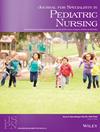Impact of emergency management in a simulated home environment for caregivers of children who are tracheostomy dependent
Abstract
Purpose
Children who are tracheostomy dependent require comprehensive caregiver preparation for safe hospital-to-home transition. Although a structured discharge education program successfully trained caregivers to provide routine daily tracheostomy care, emergency response training was limited, lacking realistic experiences. Initiation of simulated emergency training for caregivers indicated performance confusion related to tracheostomy cardiopulmonary resuscitation (CPR). This study evaluated the effectiveness of an evidence-based tracheostomy CPR education intervention via caregiver participation in a high-fidelity simulation of a home-based emergency scenario on the performance of essential behaviors, comfort, and satisfaction.
Design and Methods
The study utilized a prospective descriptive pre- and post interventional design; 44 caregivers of children who were tracheostomy dependent participated. All caregiver participants completed: video- and instructor-assisted specialized tracheostomy CPR class, high-fidelity simulation performance of a home-based emergency (respiratory failure with cardiac arrest), postsimulation video debriefing, performance assessment with an objective scoring rubric, and pre- and post simulation surveys on levels of comfort and satisfaction.
Results
On the performance of essential emergency management behaviors, 86.4% of caregivers performed all four behaviors, but only 36.4% performed these essential behaviors in order. Post simulation caregiver comfort with emergency management significantly increased from pre simulation (p = .001). All caregivers were satisfied with this training and would recommend simulation of home-based emergencies for all caregivers. Qualitative feedback from caregivers revealed themes of gratitude and the importance of hands-on practice with guided debriefing/feedback. Study power was 0.98.
Practice Implications
Objective evaluation of caregiver performance demonstrated specialized tracheostomy CPR education prepared caregivers to respond in a home emergency. Caregivers viewed simulation as an opportunity to gain hands-on experience and improve emergency responses. It may be beneficial for other similar programs to include specialized tracheostomy CPR and emergency scenario simulation in their discharge education protocols and subsequently compare this program to other similar programs to establish best practice guidelines.

 求助内容:
求助内容: 应助结果提醒方式:
应助结果提醒方式:


